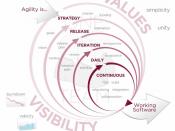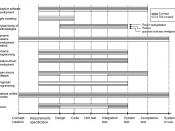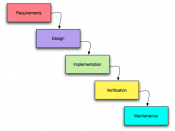Waterfall and eXtreme programming Methodologies
A methodology defines a series of steps or processes that build upon one another to reach a conclusion of some sort, whether it is implementing a major software program, updating an existing system, building and deploying a data warehouse, or performing countless IT projects. All methodologies have strengths and weaknesses that make them more suitable for some projects than others, or focus more heavily one part of the development or implementation process than another. And because no two-business situations are the same, a methodology offers options that enable the project manager to reach the desired conclusion regardless of the circumstances. There are several methodologies that a project manager may choose to use to accomplish or reach their desired goals for their company, but the two most commonly used in today's IT world are Waterfall and eXtreme programming.
The Waterfall methodology is very powerful but the least flexible of the methodologies.
It is also one the most traditional methodologies used in software development today, a lot of companies base their success on this methodology. The Waterfall methodology is done in several phases, the analysis phase, the design phase, the implementation phase, and the testing phase. A project manager may deligate a group or team to perform a specific phase of the project. The Waterfal methodolgy requires each phase of a project to be completed before the next phase can begin. That's how it gets it's name; because each phase flows naturally into the next phase like water over the falls. It also requires analysis and planing before actions are taken. Thus, forcing the analysis team to precisely define their requirements. It is much easier to build a project if it is known what that project is.
Many times an programming team has built some code...


